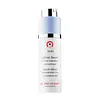What's inside
What's inside
 Key Ingredients
Key Ingredients

 Benefits
Benefits

 Concerns
Concerns

No concerns
 Ingredients Side-by-side
Ingredients Side-by-side

Water
Skin ConditioningPolysorbate 80
EmulsifyingCaprylic/Capric Triglyceride
MaskingPolysorbate 20
EmulsifyingButylene Glycol
HumectantPersea Gratissima Oil
Skin ConditioningGlycerin
HumectantDimethicone
EmollientRetinol
Skin ConditioningMagnesium Ascorbyl Phosphate
AntioxidantColloidal Oatmeal
AbsorbentTocopherol
AntioxidantHydrolyzed Hyaluronic Acid
HumectantCeramide NP
Skin ConditioningAcetyl Hexapeptide-8
HumectantLinoleic Acid
CleansingAllantoin
Skin ConditioningPhytosteryl Canola Glycerides
Skin ConditioningPalmitic Acid
EmollientOleic Acid
EmollientGlycine Soja Oil
EmollientHydroxypropyl Cyclodextrin
MaskingAloe Barbadensis Leaf Juice
Skin ConditioningTriolein
Skin ConditioningCaprylyl Glycol
EmollientAcrylates/C10-30 Alkyl Acrylate Crosspolymer
Emulsion StabilisingXanthan Gum
EmulsifyingLecithin
EmollientStearic Acid
CleansingMaltodextrin
AbsorbentBHT
AntioxidantBHA
AntioxidantPhenoxyethanol
PreservativeSodium Hydroxide
BufferingPotassium Sorbate
PreservativeWater, Polysorbate 80, Caprylic/Capric Triglyceride, Polysorbate 20, Butylene Glycol, Persea Gratissima Oil, Glycerin, Dimethicone, Retinol, Magnesium Ascorbyl Phosphate, Colloidal Oatmeal, Tocopherol, Hydrolyzed Hyaluronic Acid, Ceramide NP, Acetyl Hexapeptide-8, Linoleic Acid, Allantoin, Phytosteryl Canola Glycerides, Palmitic Acid, Oleic Acid, Glycine Soja Oil, Hydroxypropyl Cyclodextrin, Aloe Barbadensis Leaf Juice, Triolein, Caprylyl Glycol, Acrylates/C10-30 Alkyl Acrylate Crosspolymer, Xanthan Gum, Lecithin, Stearic Acid, Maltodextrin, BHT, BHA, Phenoxyethanol, Sodium Hydroxide, Potassium Sorbate
Water
Skin ConditioningSodium Lactate
BufferingSuccinic Acid
Buffering1,2-Hexanediol
Skin ConditioningGlycerin
HumectantPropanediol
SolventPanthenol
Skin ConditioningAllantoin
Skin ConditioningCaffeine
Skin ConditioningCaprylyl Glycol
EmollientButylene Glycol
HumectantLactobacillus Ferment Lysate
Skin ConditioningPolyglyceryl-10 Laurate
Skin ConditioningEthylhexylglycerin
Skin ConditioningXanthan Gum
EmulsifyingPentylene Glycol
Skin ConditioningDisodium EDTA
Acetyl Glucosamine
Skin ConditioningCynanchum Atratum Extract
Skin ConditioningSodium Hyaluronate
HumectantHydroxyacetophenone
AntioxidantCitrus Aurantium Dulcis Peel Oil
MaskingAlthaea Rosea Flower Extract
Skin ConditioningSodium Hyaluronate Crosspolymer
HumectantDipropylene Glycol
HumectantCaprylyl/Capryl Glucoside
CleansingCeramide NP
Skin ConditioningCholesterol
EmollientHydrogenated Lecithin
EmulsifyingLinolenic Acid
CleansingWater, Sodium Lactate, Succinic Acid, 1,2-Hexanediol, Glycerin, Propanediol, Panthenol, Allantoin, Caffeine, Caprylyl Glycol, Butylene Glycol, Lactobacillus Ferment Lysate, Polyglyceryl-10 Laurate, Ethylhexylglycerin, Xanthan Gum, Pentylene Glycol, Disodium EDTA, Acetyl Glucosamine, Cynanchum Atratum Extract, Sodium Hyaluronate, Hydroxyacetophenone, Citrus Aurantium Dulcis Peel Oil, Althaea Rosea Flower Extract, Sodium Hyaluronate Crosspolymer, Dipropylene Glycol, Caprylyl/Capryl Glucoside, Ceramide NP, Cholesterol, Hydrogenated Lecithin, Linolenic Acid
Ingredients Explained
These ingredients are found in both products.
Ingredients higher up in an ingredient list are typically present in a larger amount.
Allantoin is a soothing ingredient known for its protective and moisturizingg properties. Because of this, it is often added to products with strong active ingredients.
Studies show higher concentrations of this ingredient can promote wound healing.
Though it can be derived from the comfrey plant, allantoin is produced synthetically for cosmetic products to ensure purity.
Learn more about AllantoinButylene Glycol (or BG) is used within cosmetic products for a few different reasons:
Overall, Butylene Glycol is a safe and well-rounded ingredient that works well with other ingredients.
Though this ingredient works well with most skin types, some people with sensitive skin may experience a reaction such as allergic rashes, closed comedones, or itchiness.
Learn more about Butylene GlycolCaprylyl Glycol is a humectant and emollient, meaning it attracts and preserves moisture.
It is a common ingredient in many products, especially those designed to hydrate skin. The primary benefits are retaining moisture, skin softening, and promoting a healthy skin barrier.
Though Caprylyl Glycol is an alcohol derived from fatty acids, it is not the kind that can dry out skin.
This ingredient is also used as a preservative to extend the life of products. It has slight antimicrobial properties.
Learn more about Caprylyl GlycolCeramide NP is a type of ceramide and formally known as ceramide 3.
Ceramides are intercellular lipids naturally found in our skin that bonds dead skin cells together to create a barrier. They are known for their ability to hold water and thus are a great ingredient for dry skin.
Ceramides are an important building block for our skin barrier. A stronger barrier helps the skin look more firm and hydrated. By bolstering the skin ceramides act as a barrier against irritating ingredients. This can help with inflammation as well.
If you would like to eat ceramides, sweet potatoes contain a small amount.
Read more about other common types of ceramides here:
Ceramide AP
Ceramide EOP
Glycerin is already naturally found in your skin. It helps moisturize and protect your skin.
A study from 2016 found glycerin to be more effective as a humectant than AHAs and hyaluronic acid.
As a humectant, it helps the skin stay hydrated by pulling moisture to your skin. The low molecular weight of glycerin allows it to pull moisture into the deeper layers of your skin.
Hydrated skin improves your skin barrier; Your skin barrier helps protect against irritants and bacteria.
Glycerin has also been found to have antimicrobial and antiviral properties. Due to these properties, glycerin is often used in wound and burn treatments.
In cosmetics, glycerin is usually derived from plants such as soybean or palm. However, it can also be sourced from animals, such as tallow or animal fat.
This ingredient is organic, colorless, odorless, and non-toxic.
Glycerin is the name for this ingredient in American English. British English uses Glycerol/Glycerine.
Learn more about GlycerinWater. It's the most common cosmetic ingredient of all. You'll usually see it at the top of ingredient lists, meaning that it makes up the largest part of the product.
So why is it so popular? Water most often acts as a solvent - this means that it helps dissolve other ingredients into the formulation.
You'll also recognize water as that liquid we all need to stay alive. If you see this, drink a glass of water. Stay hydrated!
Learn more about WaterXanthan gum is used as a stabilizer and thickener within cosmetic products. It helps give products a sticky, thick feeling - preventing them from being too runny.
On the technical side of things, xanthan gum is a polysaccharide - a combination consisting of multiple sugar molecules bonded together.
Xanthan gum is a pretty common and great ingredient. It is a natural, non-toxic, non-irritating ingredient that is also commonly used in food products.
Learn more about Xanthan Gum